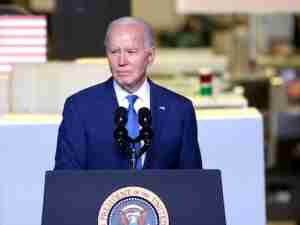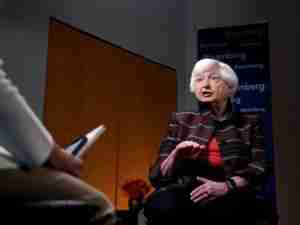Twice Germany’s Growth Not Enough Amid Polish Spending Plans
By: Piotr Skolimowski | Jan 26 2016 at 10:10 AM | International Trade
Costly campaign promises mean growth at double the pace of Germany’s economy just won’t do it for Poland’s new government.
While Poland’s gross domestic product expanded in 2015 at the strongest clip in four years, the 10-week-old cabinet is seeking gains of as much as 6 percent, a rate the economy last tested when the ruling Law & Justice was previously in power in 2005-2007. Data released Tuesday showed GDP grew 3.6 percent last year after a 3.3 percent jump in 2014 and just above the 3.5 percent median of 30 estimates in a Bloomberg survey.
“The only possibility to keep the nominal deficit under control is by boosting growth,” Jaroslaw Janecki, an economist at Societe Generale SA, said by phone from Warsaw. “That’s possible, but the room for fiscal stimulus is limited as we’re bumping up against the 3 percent deficit limit already.”
The European Union’s biggest eastern economy needs growth more befitting outperformers among developing nations such as India and the Philippines to help pay for campaign pledges that swept Law & Justice into power in 2015. The economy will expand 3.5 percent this year and next, according to median forecasts in Bloomberg surveys of analysts.
The uncertainties in the fiscal outlook are whipping up volatility around Polish assets and giving fodder to critics of the new government even as the party has pledged to keep the deficit below the EU’s ceiling of 3 percent of economic output. That’s needed to maintain the flow of 82.5 billion euros ($89.3 billion) in funds earmarked by the bloc through 2020.
Spending Plans
Law & Justice returned to power in October with promises to introduce family benefits to improve Poland’s birth rate, lower the retirement age and reduce the tax burden on the poor. Standard & Poor’s, which shocked investors this month by cutting Poland’s credit rating by one level, said revenue measures to offset higher spending won’t be sufficient and described the macroeconomic assumptions behind the 2016 budget as “too optimistic.”
The nation’s first-ever sovereign downgrade has fueled the biggest currency swings since 2013. The zloty’s three-month implied volatility versus the euro surged as much as 1.5 percentage points to 9.3 percent since S&P’s move on Jan. 15. The Polish currency is the second-worst performer against the euro in developing Europe this year after the Russian ruble, with a 5.4 percent drop.
Moody’s Investor Service, which estimates the deficit at more than 3 percent of economic output in 2015 and next year, sees “further downside risks to budgetary performance in 2017 given the potential for further relaxation of fiscal policy and for weaker growth,” analysts including Marco Zaninelli and Michail Michailopoulos said in a report on Tuesday.
The fiscal gap didn’t exceed 3 percent last year based on preliminary figures, the Finance Ministry said in an e-mailed statement. The data show the “economy was on the path of sustainable growth,” it said.
On Leash?
Central bank Governor Marek Belka has warned GDP is already expanding near its potential and attempts to prod growth higher would be short-lived and could lead to imbalances. Fiscal loosening may also prompt an interest-rate increase as public finances from 2017 seem “difficult to hold on a leash,” policy maker Jerzy Osiatynski said in an interview last week.
This year’s budget is so far under control. Financing for payouts of monthly benefits for families with children, estimated at 17 billion zloty ($4.1 billion), would come from special taxes on banks, insurers and retailers. The government will also receive windfall payments from the sale of high-speed Internet licenses and a higher central bank profit to keep the fiscal gap at 2.8 percent of economic output.
Fiscal Outlook
What the next year brings is less certain. That’s when the ruling party plans to introduce its other initiatives including a lower retirement age and a higher tax-free allowance that may deprive the budget of additional revenue. Deputy Finance Minister Leszek Skiba expects tighter tax collection to bring 15 billion zloty in additional inflows as the government cracks down on the avoidance of value-added taxation.
Even so, the measures planned by the Finance Ministry will only increase the fiscal burden, which may hurt growth in the long term, according to Societe Generale’s Janecki.
Development Minister Mateusz Morawiecki wants a bigger share of investments in the economy to help stimulate growth. He predicts spending on research and development to rise to 1.7 percent of economic output from 0.8 percent in the next six or seven years.
Until then, Poland is counting on EU development funds to power growth, with the financing set to contribute 0.5 to 1.5 percentage points to the country’s expansion annually after it’s released starting in the fourth quarter, Jerzy Kwiecinski, Morawiecki’s deputy, said in an interview last week.
“It’s good to have a vision,” said Grzegorz Maliszewski, chief economist at Bank Millennium SA in Warsaw. “However, the devil is in the detail and achieving balanced and sustainable growth without major reforms and in the current external environment could be quite a challenge.”








